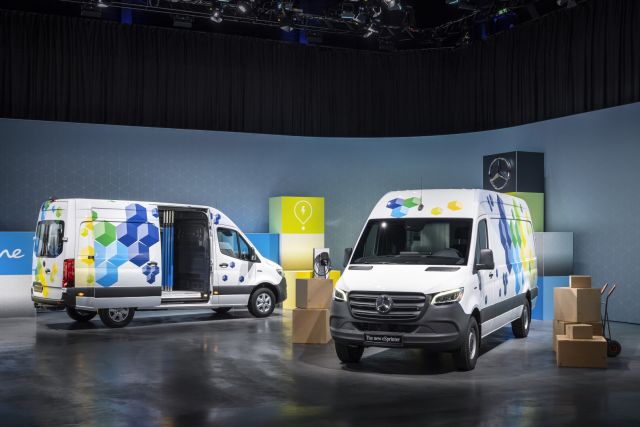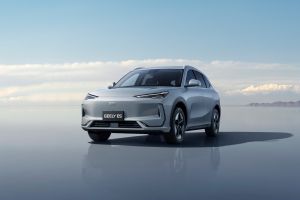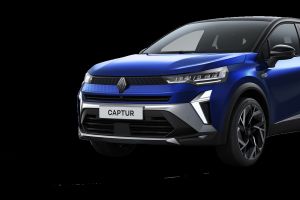
BYD brings affordable PHEV SUV to the market
BYD has added another model to its line-up in South Africa. This time it is the Sealion 5, which slots in below the larger Sealine 6, which is also available locally.
- Product News
- 15 December 2025
For the first time, an electric van bearing the Mercedes-Benz star is available in South Africa in the form of Merc’s new eSprinter.

What is it?
The new eSprinter combines cutting-edge technology with the iconic versatility of the Sprinter range, eliminating tailpipe emissions. Much about the eSprinter is generous: its load compartment volume, its battery capacity and its range. It is available as a panel van in two body lengths and with two battery-size options.
Design:
More than just an electric van, the new eSprinter is a versatile all-rounder built on a tri-modular concept. This innovative design comprises three key modules: a uniformly designed front module housing all high-voltage components, a space-saving underbody battery module, and a rear module containing the powerful electric motor.
Range:
The new eSprinter demonstrated its efficiency during a recent test drive in which a pre-production vehicle of the new eSprinter panel van with a battery size of 113 kWh completed a route distance of 475 kilometres on a single battery charge. According to simulations based on the Worldwide Harmonised Light Vehicle Test Procedure (WLTP) City cycle, a range of up to 530 kilometres is possible in urban areas.
Powertrain:
The electrically driven rear axle in the new eSprinter offers customers advantages in terms of vehicle lengths, maximum gross vehicle weight (up to 4.25 tonnes) as well as towing capacities (up to 2 tonnes) and load volume (up to 14 m³).
The standard wheelbase is available with a 100 kW Permanent Magnet Synchronous Motor (PSM), and an 81 kWh-battery. Furthermore, the long wheelbase is available with either a 100 kW or 150 kW PSM, and an 81 kWh-battery or 113 kWh-battery, respectively.
Battery efficiency and safety:
Within the eSprinter, all battery modules contain a specially developed crash-proof cover. The temperature of the batteries is controlled by an enhanced active thermal-management system with a heat pump as standard. This ensures an optimised range and life cycle of the high-voltage batteries. The eSprinter’s battery cells are made of lithium iron phosphate, and all batteries are free of cobalt and nickel thanks to a new and modified cell chemistry.
Charging:
Like all electric vehicles from Mercedes-Benz, the new eSprinter is capable of both alternating current (AC) and direct current (DC) charging. The on-board batteries can be charged with direct current at up to 115 kilowatts at a fast-charging station. This means that at the maximum charge rate of 115 kW, the eSprinter’s battery, with a usable capacity of 81 kWh, can be charged to 80% in around 32 minutes, and the battery with a usable capacity of 113 kWh needs approximately 42 minutes to charge to 80%.
Safety and assistance systems:
Some of the safety features always on board with the new eSprinter range are: Active Brake Assist, Cross Wind Assist, Adaptive Brake Lights, and Intelligent Speed Assist with cruise control. Optional equipment includes, among others, a Reversing Camera, LED High Performance Headlamps and Active Lane Keeping Assist.
Prices:
414 eSprinter PRO Standard wheelbase A2 (R1 270 030) 81 kWh 100 kW 400 Nm.
420 eSprinter PRO Long wheelbase A3 (R1 301 140) 81 kWh 150 kW 400 Nm.
420 eSprinter PRO Long wheelbase A3 (R1 566 723) 113 kWh 150 kW 400 Nm.
Service Intervals: 1 year/40 000km, Warranty: 2 years/Unlimited and the Battery Certificate: 8 years/160 000 km.

BYD has added another model to its line-up in South Africa. This time it is the Sealion 5, which slots in below the larger Sealine 6, which is also available locally.

Geely has formally returned to the South African market with the introduction of two new models, the fully electric E5 and the plug-in hybrid E5 EM i.

Renault’s Capture is celebrating its tenth birthday with the launch of a new version. Internationally, over two million Capturs have been sold so far.